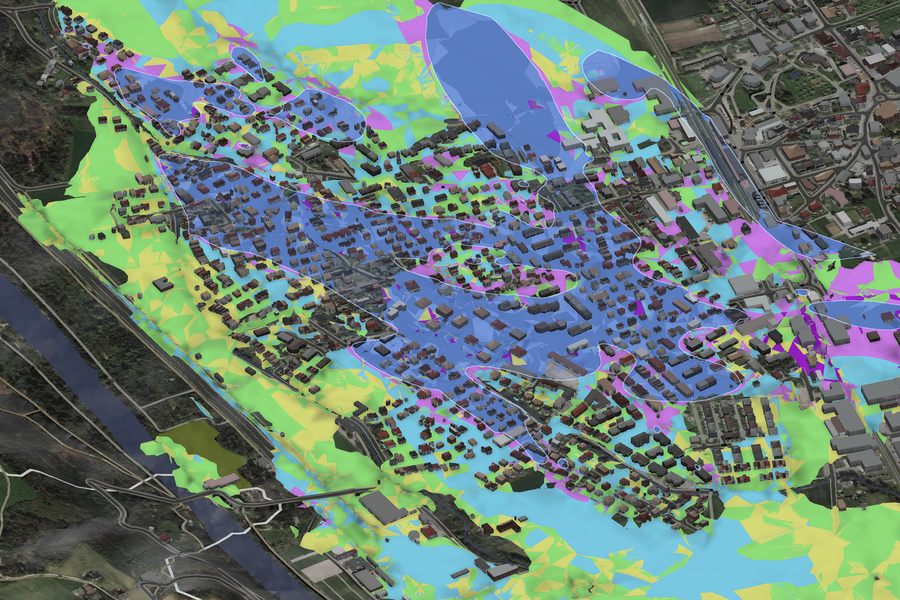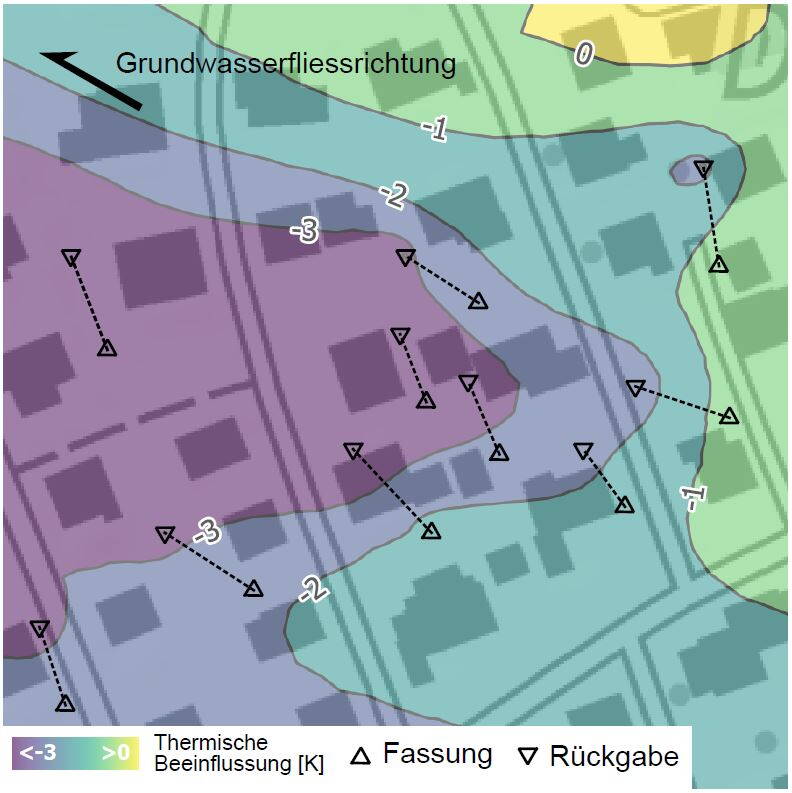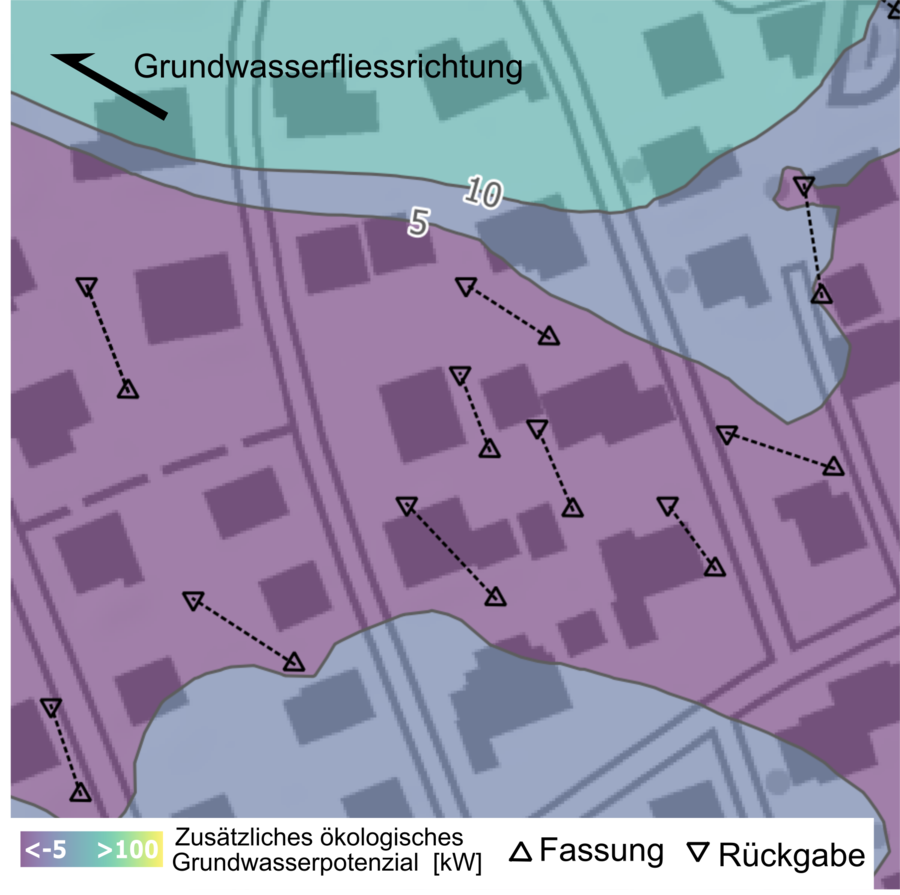Pilot study on groundwater potential
Münsingen, Bern
46° 52′ 18″ N, 7° 33′ 17″ E
2017 - 2019
Groundwater has the potential to be an excellent energy source, as it can be used for heating or cooling in a way that conserves resources. However, its exploitation is not possible or appropriate to the same extent in every location. Until now, there has been no uniform framework for objectively evaluating all the relevant factors – such as groundwater depth, direction of flow, temperature balance, hydraulic short-circuits and neighbouring systems.
With the new method developed by GEOTEST, a systematic and comprehensible prognosis can be made as to where and how much groundwater is available that can be sustainably used for heating or cooling.
The method developed by GEOTEST systematically and comprehensibly predicts how much groundwater is available that can be used for heating or cooling.
The method also answers the question of how groundwater extraction and return can be optimally organised. The technical feasibility, the permissible cooling or warming of the groundwater compared with its natural state, and the probability of interference with neighbouring systems are all taken into account. In order to ensure accuracy, the potential already used is also measured.
The results of the pilot study in the ‘Energy City’ of Münsingen will in future serve the authorities as a basis for all decisions on the approval of new groundwater-use authorisations.
Interactive 3D model in Geobrowser: https://geobrowser.ch





